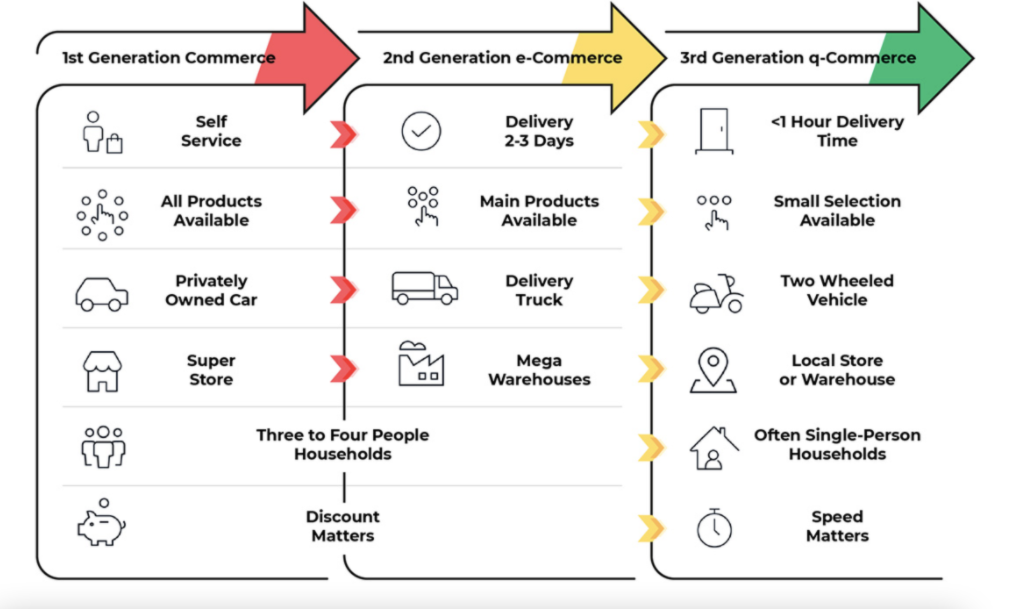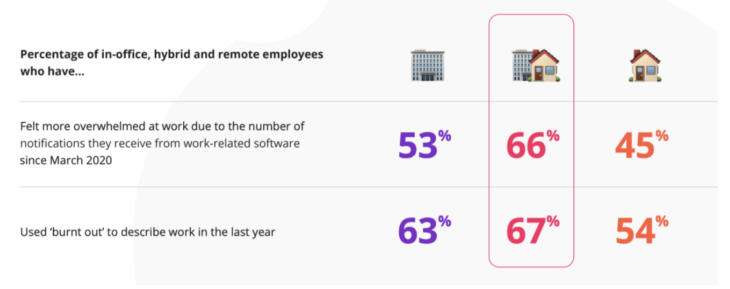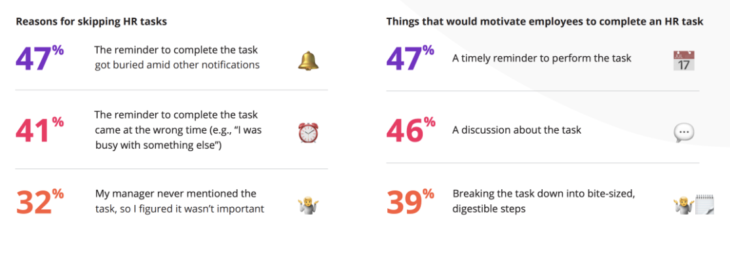
For some time, I’ve been looking for one “source” that curates modern takes on HR Tech, perspectives from the people who build it, and its impact on enterprise — something that’s tailor-made by professionals for decision-makers.
I never found it — so I decided to build it.
Every week, I’ll be sharing fresh insights on tech platforms, design, data, and the future of work — straight to your inbox.
My Thoughts
Trying to get your hands on an outlandishly expensive Tesla? You should try monetizing Elon Musk’s data.
That’s what one 19-year-old, Jack Sweeney, has been working on for the past few weeks. What started as a hobby building bots that tracked Elon Musk’s private jet 🛩️ using publicly available air-traffic data unexpectedly became a $5,000 offer from Musk himself, offering to pay Sweeney to take down the account and help Musk make his jet less detectable. But Jack, knowing his worth and then adding tax 💵 made a counteroffer of $50k, or at least an internship (both, he noted, would help him attend college and work towards his career goals). Sweeney then reports he was blocked by Elon Musk on Twitter. 😐
Since then, there has been talk about the trading the bot for a Tesla, but Jack has ultimately decided to retain ownership of the account. In fact, he’s using the publicity as a springboard to start his own company, Ground Control, which will use Sweeney’s bots to track and monetize data from tracking other high-profile jets. 🛫 According to Bloomberg, “Atypical corporate travel can provide clues about a company’s business activity, mergers and acquisitions and more.”
What will happen with this standoff is yet to be seen, but I have a lot of respect for Mr. Sweeney. At 19, he’s already recognized that data exists everywhere — even in thin air. In the era of the data economy, we’re going to see a lot more ideas like this inspiring the next new business venture, especially in enterprise tech. Kudos, Jack. 💯
Market Moves
Q-commerce: don’t worry — it’s not what you think it is. 😅 Though some would argue that the name could use a refresh, q-commerce, aka quick commerce, instant delivery, or immediate logistics, is merely a catchy buzzword for the market of hyperlocal, instant delivery. 🛵 💨 Catapulting off of — you guessed it — the COVID-19 pandemic, startups like Gopuff and Gorillas have seen exponential growth, with Gopuff’s valuation jumping from $8.9 billion to $40 billion in 2021 alone.
Q-commerce is reimagining the e-commerce delivery model to make it both instantaneous and profitable — something that traditional food delivery apps like Uber Eats or DoorDash have always struggled with. 🔥 💰 🔥 Even 8 years into the game, Grubhub has yet to figure out a way to make their main offering profitable, with the company’s founder and CEO going so far as to admit that food delivery is a “crummy business.” (An hard-hitting quote that begs the question: was that supposed to be a pun? 🍪)
Q-commerce companies break away from traditional delivery models by using vertical integration to reduce delivery time and improve the customer experience. In practice, that translates to:
- Hyperlocal delivery:📍 Q-commerce startups are entirely defined by their promise for instant gratification. Most are aiming for an hour or less, while some brands are upping the ante with 10-minute deliveries. But without the power of teleportation, near-instant delivery is only as fast as the speed limit. Therefore, Q-commerce startups are keeping it hyperlocal. Gorillas even breaks down their New York delivery zones by neighborhood.
- Micro-fulfillment centers: 📦 Sprawling Amazon warehouses lack the agility required for q-commerce. Instead, orders are fulfilled by a network of micro-fulfillment centers located in urban areas, most maxing out at 5,000 square feet. Storing inventory close to consumers doesn’t just save time; it also helps cut back on the extremely high costs associated with the infamous last mile of delivery.
- Owning [less] inventory: 🧺 By owning their own inventory and fulfilling orders at their micro-fulfillment centers, q-commerce companies shave off precious moments spent driving to restaurants or waiting in line at the grocery store. The trade-off is deciding what inventory to stock in those tiny warehouses. Most companies opt for high-demand products that people tend to need right now like grocery staples. Or things people want, but don’t necessarily have the desire or ability to go out and get like alcohol, which is a very popular item, for whatever reason. 🤔 🍷 In fact, that’s how artist Selena Gomez reports to have discovered Gopuff, in which she is now an enthusiastic investor.
Looking ahead, there are a wide variety of predictions for what will come next for the q-commerce market, ranging from consolidation to out-and-out collapse. But with the global market forecasted to grow to $72 billion by 2025, there will definitely be plenty to watch.
Check out this guide to q-commerce for a look into instant delivery in 2022 and beyond.

Tech Innovation at Work
Unfortunately, women have begun to experience the first instances of sexual harassment within the metaverse. 😬 Starting back in late November, when Meta’s virtual reality social media platform, Horizon Worlds, was still in beta testing, one woman reported the first instance of VR sexual harassment within the app in the beta testers’ Facebook group. Meta’s initial response was less than ideal 👎 with an internal report on the incident stating that the beta tester should have used a safety feature called Safe Zone to prevent other avatars from interacting with her own. Horizon’s VP did refer to the incident as unfortunate, but still considered it “good feedback.” (I think a lot of people would consider it “victim blaming,” but this isn’t the place to get into it. 🤭 )
Seeing the writing on the walls, Meta announced last week that it had added a default feature called “Personal Boundary” to Horizon Worlds and Horizon Venues. Now, avatars will be pre programmed with the original Safety Zone feature, preventing avatars from coming into contact with one another, save high fives and fist bumps. 🧑⚕️ ↔️ 🤦♀️
Reports on this event almost always include one female gamer’s 2016 open letter detailing her experience being virtually groped in a multiplayer VR game. In her letter, she writes, ✍️ ✍️ “As VR becomes increasingly real, how do we decide what crosses the line from an annoyance to an actual assault? Eventually we’re going to need rules to tame the wild, wild west of VR multi-player. Or is this going to be yet another space that women do not venture into?” ✍️ ✍️ The question has proven itself to be evergreen, as we must now consider the implications of VR and the metaverse in the workplace. Countless studies and articles have documented the respite women and people of color have had from workplace harassment and microaggressions since switching to remote work. And while VR is being looked at as a way to offer some level of human connection for distributed teams, leaders are not putting the necessary effort into addressing issues in their physical work culture before transitioning to virtual. 🌐 After all, how can organizations maintain a positive culture in a completely new environment when many struggle to create it in the physical office?
Digital transformation got you in a daze? 😶🌫️ Harvard Business Review is making it easy this week. A talented team of IT thought leaders has brought their decades of experience in a range of roles and industries together to explore the secrets to successful digital transformation, and they’ve boiled it down into this week’s featured piece: The 4 Pillars of Successful Digital Transformations. 🏛️ Here’s a tl;dr of each pillar, just for you:
- IT Uplift: aka IT Upgrade. Just like every house needs a solid foundation, every organization needs a solid IT infrastructure, which is why investing in your IT infrastructure is essential. That could mean pooling resources on big projects to make your IT more agile, or buying cutting-edge devices that will drive your organization’s future endeavors.
- Digitizing Operations: Repeat after me: automate, optimize, simplify. Leveraging digital advancements is the key to worker smarter and maximizing returns on any investments you make during your IT Uplift.
- Digital Marketing: This one might seem like a curveball. When we talk about digital transformation, we don’t tend to think outside an organization. But digital marketing strategies can amplify your current messages, establish your brand, and connect with new customers on a cost-effective scale.
- New Ventures: The internet is a place full of opportunity. Part of digital transformation is exploring and experimenting with new offerings, business models, and revenue streams that fuel organizational growth.
Get the in-depth explanation of each pillar and advice on how C-Suite leaders can support changes in their department here.
The Changing Workplace
Time poverty: ⏰ the harsh reality that lurks behind jokes about not having enough hours in the day. Dating all the way back to the first Blackberry, America’s obsession with work (or the hustle, as people who still use Blackberrys call it) our time has slowly begun to be eaten away. Fast forward 30 years to the pandemic, and we’re once again witnessing a similar acceleration of time depletion. ⌛In the first year of the pandemic, the average work day quietly tacked on an additional 48 minutes, and still 62% of people reported struggling with their workload. Lacking time outside of labor and responsibilities takes a toll on overall wellness and mental health. 🤕 However for women, and especially mothers, the effects of time poverty are even more severe, owing to the significant amount of unpaid labor women perform including household chores 🧹 and child rearing tasks. As employers and leaders, I think having a working knowledge of time poverty and its impact on employees is vital to understanding the importance of truly flexible work — an argument that always seems to get lost amidst the home vs. office debate. Give these three articles (and this one) a read so you can get a better idea.

The Wall Street Journal has reported on the newest talent pool amid the Great Resignation: teachers. 👨🏻🏫 Burned out by the demand of hybrid learning and the stress of returning to unsafe classroom environments, educators are doing what a lot of us have done: demanding better. Federal data shows that in 2020, more than one million workers in private and public education positions left their jobs. 🚶💨 ✌️According to LinkedIn, the number of teachers using the site number who made a career change increased by 62% in the same time frame. So, where are all the teachers going? The answer is everywhere. Retail workers and desk jockeys haven’t been the only ones exploring their passions and setting out on new career paths. Equipped with rigorous academic backgrounds, (💯) superb communication skills, (💯💯 ) and unimaginable stress tolerance, (💯💯💯 ) teachers are finding work in education-adjacent fields like learning and development, corporate training, sales, or EdTech, as well as graphic design and other passion-driven endeavors. 😍 Without writing off the damage this mass exodus is having on schools, having educators in the office is proving to be incredibly beneficial for organizations and the newest legion of creative professionals.
Despite the renewed appreciation for HR, research from people ops platform Enboarder reported that 65% of employees said they have not changed a behavior or opinion because of an HR initiative in the past 12 months. First of all: Ouch. 😢 All the work we’ve put into planning and initiatives for supporting our hybrid teams over the past two years and they couldn’t even be bothered to do some simple desk stretches? Where did we go wrong?
In “the age of overwhelm,” 😵💫 as Enboard describes it, the issue isn’t likely the us, or the program itself. Rather, the way HR initiatives are being presented or communicated is not cutting through the noise of the new normal, resulting in a failure to activate and engage people. 🙅 According to Enboard, the top four reasons HR initiatives lack impact are 1.) poorly timed communication, 2.) a lack of connection, 3.) poor engagement, and 4.) too much friction. Don’t worry, though, Enboarder’s report provides a ton of insight into identifying 🔍 and addressing each issue. (Here’s a hint: your HR department needs to operate like a password manager). Check out this week’s All About Data for key metrics from the research and a link to the full report.
All About Data
Enboarder’s latest people insights report, HR in the Age of Overwhelm, surveyed 2,000 employees across the U.S., UK, and Australia in entry-level, associate, and management roles to gain an understanding of what is and is not enabling effective HR strategies in the modern world of work. Here are the highlights:
🚨 Newsflash 🚨 Burnout is still an issue, especially for remote workers:

In fact, it’s gotten so bad, 43% of hybrid workers admitted to giving up on a task because they couldn’t remember a password. 😅
🛎️ One of the primary reasons hybrid workers at all levels feel so overloaded is because of notifications 🛎️
- 61% of managers receive 21 or more notifications in a day (compared to 32% of entry-level workers).
😵💫 One of the biggest issues is that notifications are poorly timed and force employees to switch between tasks 😵💫
- 40% of an employee’s daily productivity can be eaten up by task switching 🦈
⚖️ Information overload and overwhelm impact productivity and work-life balance ⚖️
- 53% of all employees say information overload keeps them from doing their job efficiently.
- 46% of all employees say they need nights and weekends to think strategically about their jobs because they’re overwhelmed during the workday.
- 51% of employees feel pressured to answer messages after hours or over the weekends (preventing them from relaxing and staving off burnout).
Need to get an HR task done? Here are your most common obstacles, and how you can effectively broach the subject:

Editor’s Picks
- Understanding social contracts in a post-COVID world.
- How to brainstorm without biases.
- Location-based pay continues to be a debate
- The Legal Pitfalls of Remote and Hybrid Work
Click here to subscribe to Exit Interview, a weekly email about tech platforms, design, data, and the future of work — straight to your inbox.

